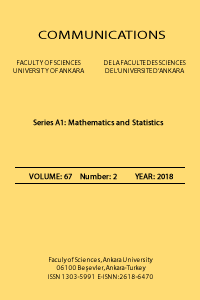A data science study for determining food quality: an application to wine
In this paper, wine quality is investigated based on physicochemical ingredients which include fixed acidity, volatile acidity, citric acid, residual sugar, chloride, free sulfur dioxide, total sulfur dioxide, density, pH, sulphate and alcohol, by ANFIS (Adaptive Neuro Fuzzy Inference System) method and by random forest algorithm which is a powerful classification algorithm. Although this study specifically investigate the relation between physicochemical ingredients and the quality of wine, the results can be adaped to determination of the quality of any food product in terms of the ingredients.
___
- Jackson, R. S., Wine Science Principles and Applications, 3th Ed. San Diego, USA 2008.
- Delgado, F.M., Cernadas, E., Barro, S., Do we need hundreds of classifiers to solve real world classification problems?, Journal of Machine Learning Research 15, (2014) 3133-3181.
- Verma, B. Application of fuzzy logic in post harvest quality decisions. Proceedings of the National Seminar on Post harvest Technology of Fruits. Bangalore, India: University of Agricultural Sciences, 1995.
- Goel, P., Goel, S., Bhatia, S. Food Quality Assessment Using Fuzzy Logic. 2nd International Conference on Computing for Sustainable Global Development (INDIACom), 2015.
- Perrot, N., Ioannou, I., Allais, I., Curt, C., Hossenlopp, J., Trystram, G., Fuzzy concepts applied to food quality control: A review, Fuzzy Sets and Systems, 157, (2010) 1145-1154.
- Askerzade, I.N., Mahmood, M., Control the extension time of traffic light in single junction by using fuzzy logic, International Journal of Electrical & Computer Sciences IJECS--IJENS, 10-2, (2010) 48-55.
- Ziasabounchi, N., Askerzade, I., ANFIS based classification model for heart disease prediction, International Journal of Electrical & Computer Sciences IJECS--IJENS,14-2, (2014), 7-12.
- Amrahov, Şahin Emrah, Askerzade, I.N., Strong solutions of the fuzzy linear systems, arXiv preprint arXiv:1107.2126, 2011.
- Cortez, P., Cerderia, A., Almeida, F., Matos, T., Reis, J., Modelling wine preferences by data mining from physicochemical properties, Decision Support Systems, 47, (2009) 547-533.
- Negnevitsky, M., A guide to Intelligent Systems, 2nd edition. Edinburg Gate, Harlow.
- Jang, J.S.R., Sun, C.T., Mizutani, E., Neuro Fuzzy and Soft Computing, Prentice Hall International, Inc. 1997.
- Askerbeyli, İ., Abbuljabar, J.S., Using fuzzy logic methods for carbon dioxide control in carbonated beverages. International Journal of Electrical & Computer Sciences IJECS-IJENS Vol: 11-3, (2011), 196-202.
- ISSN: 1303-5991
- Yayın Aralığı: Yılda 4 Sayı
- Başlangıç: 1948
- Yayıncı: Ankara Üniversitesi
